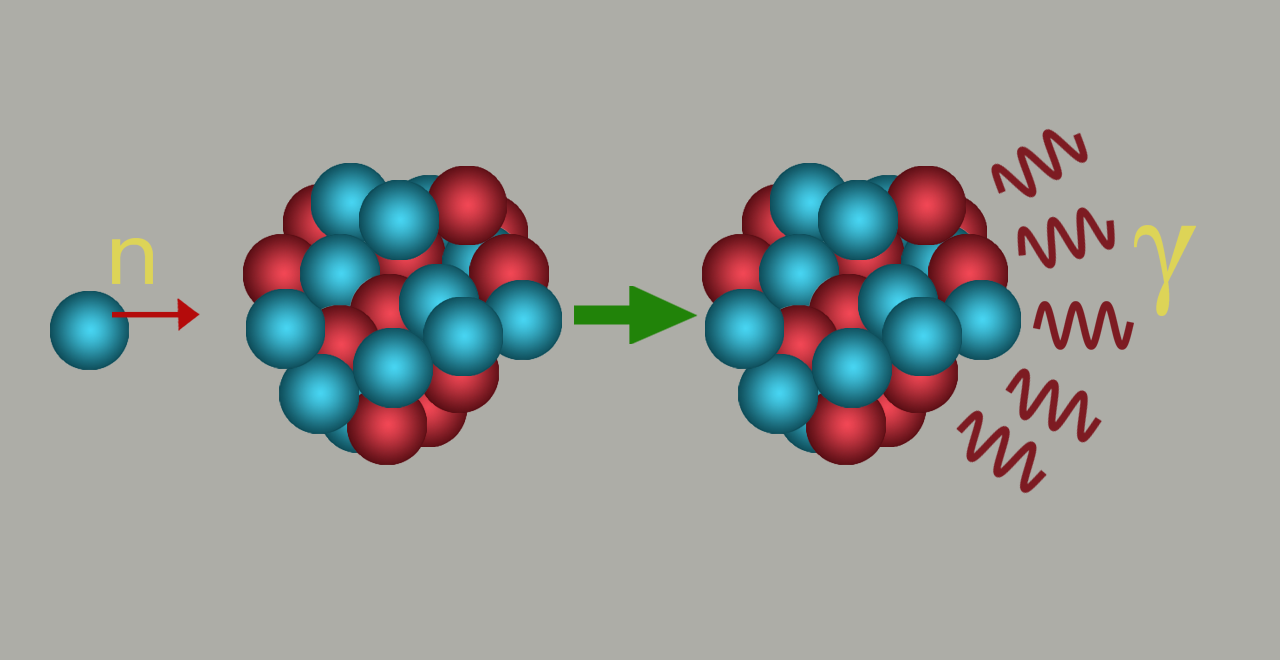Radiative Neutron Capture

The neutron capture cross sections are critically important to a breatdh of scientific fields :
radiative neutron capture plays a central role in astrophysics models of nucleosynthsis and stellar evolution,
its knowledge is necessary to optimize the design of nuclear power reactors and determine the ideal parameters
for the burnup of nucear waste. As the direct measurement of nuclear capture is possible only on stable and long-lived nuclei,
the applications resort to theoretical predictions of reactions rates, which are commonly evaluated within the statistical Hauser-Feshbach (HF) model.
The HF model makes the fundamental assumption that the capture process takes place with
an intermediary formation of the compound nucleus in thermodynamic equilibrium.
The energy of the incident particle is shared more or less uniformly by all nucleons
before releasing the energy by particle emission or gamma deexcitation. The formation of the compound nucleus
is justified by assuming the level density in the compound system at the projectile energy is high enough
to ensure an average statsitical continuum superposition of all available resonances.
However, in light nuclei, close to the shell closures or in very neutron-rich nuclei,
where only a few or no resonant states are available in the reaction energy window,
the validity of the HF predictions has to be questioned. Also, the direct capture
reaction which proceeds via the excitation of only a few degrees of freedom,
may become important or dominating at low incident energies which are typical for astrophysics processes.
My research in this domain is focused on:
- Providing an optimized nuclear structure input for the calculations of neutron capture, both in statistical
(HF) and direct capture models.
- Improving theoretical models for calculations of radiative strength functions & level densities.
- Evaluating neutron-capture rates for nuclei far from the stability line.
- Testing the limits of applicability of the HF model /its predictions in neutron-rich nuclei.
Part of these studies are ongoing within the International Emerging Action project:
Radiative Neutron Capture: Theoretical Models and Applications.
Selected publications:
[1] K. Sieja, Electric and magnetic dipole strength at low energy
Phys. Rev. Lett 119 (2017) 052502.
[2] K.Sieja, Shell-model study of the M1 dipole strength at low energy in the A>100 nuclei
Phys. Rev. C98 (2018) 064312.
[3] S. Goriely, S. Hilaire, S. Peru, K. Sieja, Gogny-HFB+QRPA dipole strength function and its application to
radiative nucleon capture cross section
Phys. Rev. C98 (2018) 014327.
[4] K. Sieja and S. Goriely, Recent shell-model calculations of gamma-decay strength functions
Acta Phys. Polonica Supp. 13 (2020) 535.

